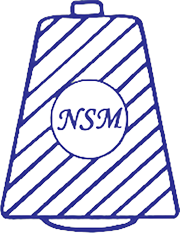“UT 4 SE: Revolutionizing Non-Destructive Testing in the Textile Industry”
In the ever-evolving landscape of the textile industry, innovation plays a pivotal role in enhancing efficiency, quality, and sustainability. One groundbreaking advancement that has made a significant impact is the introduction of Ultrasonic Testing 4 Single Elements (UT 4 SE). This cutting-edge technology has revolutionized non-destructive testing, opening new avenues for ensuring the integrity and reliability of textile materials and products.
UT 4 SE is a specialized ultrasonic testing technique that employs single-element transducers to inspect materials and detect flaws without causing any damage. This method utilizes high-frequency sound waves to penetrate materials and produce detailed images that reveal internal structures, inconsistencies, and defects. While this technology has applications across various industries, its integration into the textile sector has brought about transformative changes.
In the textile industry, the quality of materials directly affects the final product’s performance and longevity. UT 4 SE offers a non-invasive way to inspect fabrics, yarns, and other textile components for defects such as voids, delaminations, and irregularities. By capturing intricate internal images, this technology enables manufacturers to identify issues early in the production process, reducing waste and ensuring only top-quality materials are used.
The adaptability of UT 4 SE extends beyond detecting flaws; it also plays a crucial role in assessing material thickness, uniformity, and fiber density. This level of precision ensures that textiles meet design specifications and performance requirements. Whether it’s ensuring consistent fabric thickness or verifying the integrity of specialized textiles used in industries like aerospace and protective gear, UT 4 SE offers unparalleled insights.
Moreover, the integration of UT 4 SE in the textile industry aligns with sustainability initiatives. By identifying defects early on, manufacturers can salvage materials that might otherwise be discarded, minimizing waste and conserving resources. This not only benefits the environment but also contributes to the economic viability of textile operations.
In a sector that demands constant innovation to remain competitive, UT 4 SE has emerged as a game-changer. It empowers textile professionals to maintain the highest standards of quality and integrity, ultimately leading to better-end products. By enhancing non-destructive testing processes and driving sustainable practices, UT 4 SE has become an indispensable tool in the journey toward a more efficient, reliable, and responsible textile industry.
